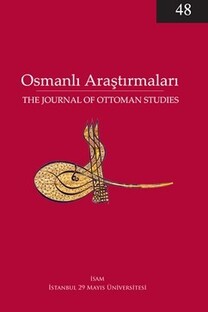Mapping the Ottomans: Sovereignty, Territory, and Identity in the Early Modern Mediterranean
This book is about more than merely maps. The “mapping” in the title encompasses more than making drawings of coastlines, rivers, mountains, and cities on flat sheets of paper. Beyond delineating, mapping is also an activity of appropriating, compartmentalizing, characterizing, representing, and misrepresenting.
Anahtar Kelimeler:
Palmira Brummett, Mapping the Ottomans, Sovereignty, Territory, Identity
Mapping the Ottomans: Sovereignty, Territory, and Identity in the Early Modern Mediterranean
This book is about more than merely maps. The “mapping” in the title encompasses more than making drawings of coastlines, rivers, mountains, and cities on flat sheets of paper. Beyond delineating, mapping is also an activity of appropriating, compartmentalizing, characterizing, representing, and misrepresenting. This is particularly true of the representation of the European ideas of the Ottoman Turks – the “Other” – in the 16th, 17th, and 18th centuries. The ways in which these commercial, diplomatic, military, and personal perceptions were recorded by Europeans in their maps and travel narratives are closely scrutinized in this well-written and richly-illustrated study of Early Modern cartography, iconography, and rhetoric. One-hundred and twenty-eight maps are reproduced and examined. The symbolic images used on the maps are disclosed. The messages encoded in the images are identified. How the images are manipulated to convey the messages is revealed.
Keywords:
Mapping, Ottomans, Sovereignty,
___
- Palmira Brummett, Mapping the Ottomans: Sovereignty, Territory, and Identity in the Early Modern Mediterranean, New York: Cambridge University Press, 2015, xviii + 365 pages, 113 b/w illus., 15 colour plates, ISBN: 978-110-7090-77-4.
- ISSN: 0255-0636
- Yayın Aralığı: Yılda 3 Sayı
- Başlangıç: 1980
- Yayıncı: TDV İslâm Araştırmaları Merkezi
Sayıdaki Diğer Makaleler
İstanbul Şer‘iyye Sicilleri Vakfiyeler Katalogu
Anlatıların Antlaşması: 1641 İngiliz Ahdnamesi’nde Dostluk, Pişkeş, ve Diplomasi Tarihi
Julia Phillips Cohen, Becoming Ottomans: Sephardi Jews and Imperial Citizenship in the Modern
Communication and Conflict: Italian Diplomacy in the Early Renaissance, 1350-1520
Mapping the Ottomans: Sovereignty, Territory, and Identity in the Early Modern Mediterranean
İbrahim Müteferrika’nın Lehistan Elçiliği ve Bilinmeyen Sefaretnâmesi
